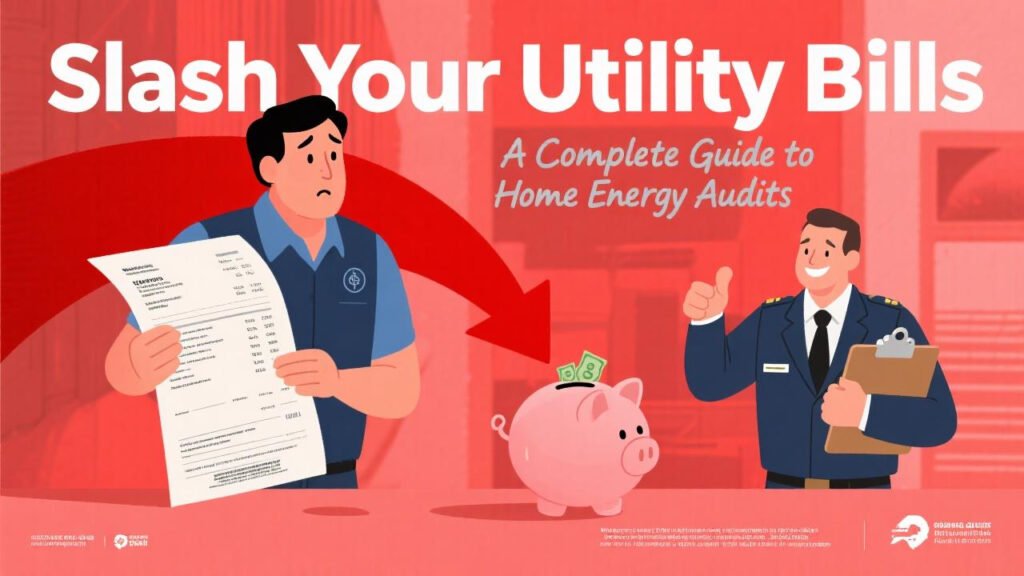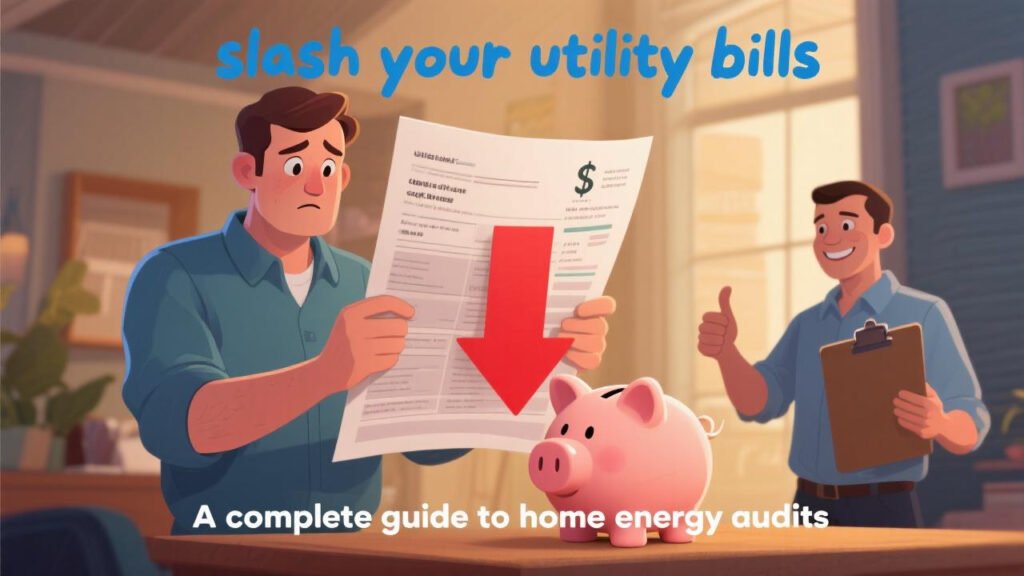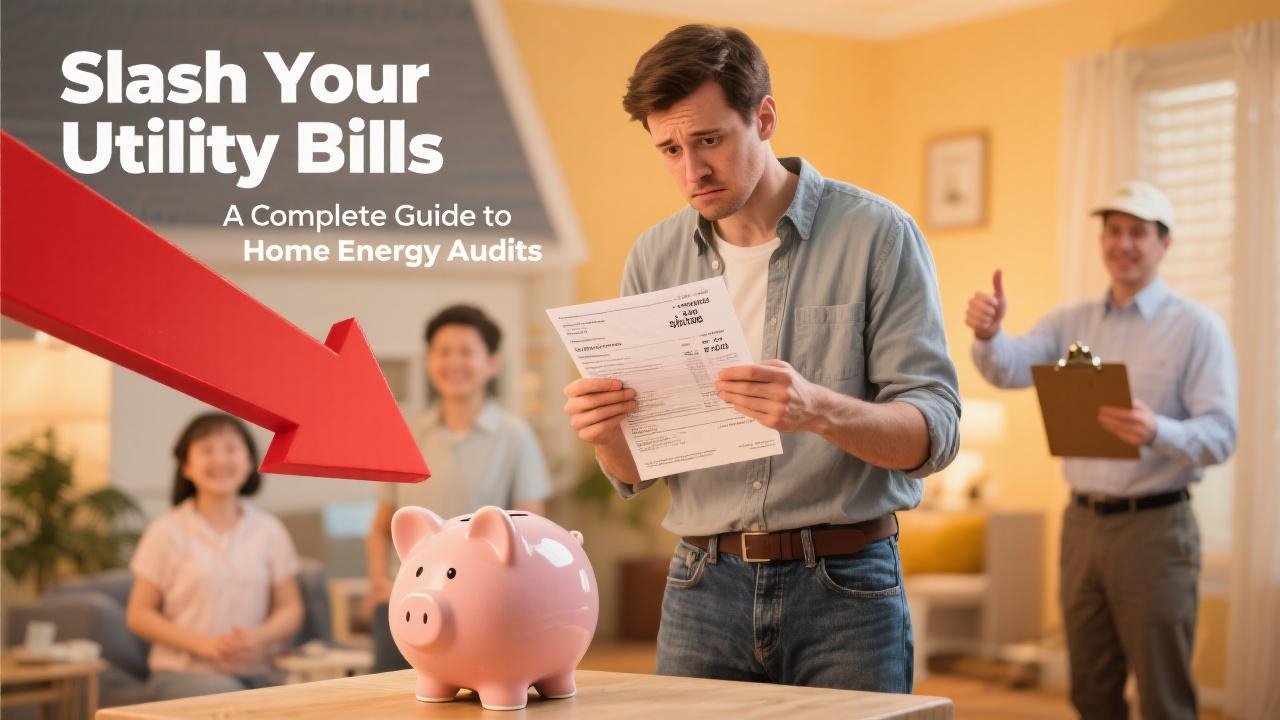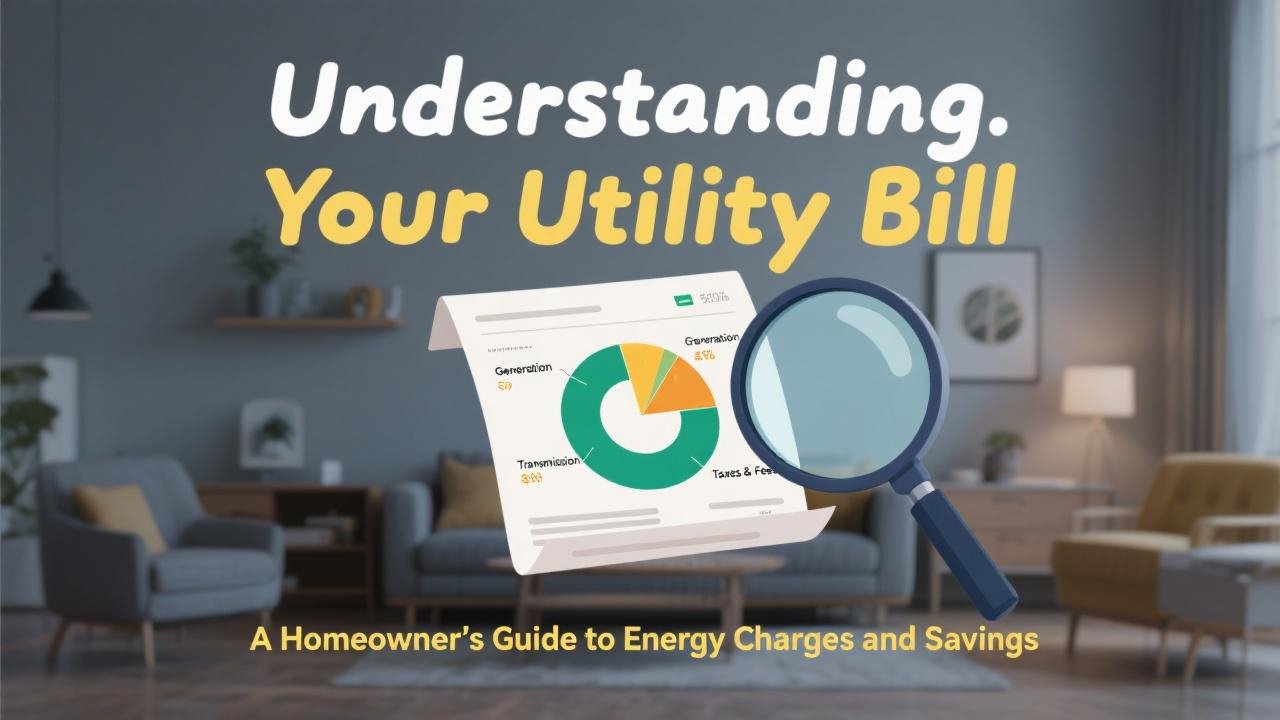Uncovering Hidden Energy Waste in Your Home
Are your energy bills higher than you’d like? Do you experience uncomfortable drafts or uneven temperatures in your home? If so, your home might be losing a significant amount of energy – and money – without you even realizing it. In 2025, one of the most effective first steps to a more energy-efficient, comfortable, and cost-effective home is a home energy audit, also known as a home energy assessment. This comprehensive evaluation can pinpoint where your home is wasting energy and identify the most effective upgrades to fix these issues.
This guide will walk you through what a home energy audit entails, the benefits, what to expect from a professional assessment (including insights from programs like ENERGY STAR’s Home Performance with ENERGY STAR ), and even some DIY tips. Remember, improving overall home energy efficiency can complement other upgrades like solar panels, making your entire energy ecosystem more effective.
What is a Home Energy Audit?
A home energy audit is a thorough examination of your home’s energy use. The goal is to identify sources of energy loss, assess the efficiency of your heating and cooling systems, check insulation levels, and pinpoint opportunities for energy-saving improvements. An audit can range from a simple DIY walk-through to a comprehensive assessment by a certified professional using specialized diagnostic equipment.

Why Get a Home Energy Audit in 2025?
- Reduce Energy Bills: By identifying and addressing energy waste, you can significantly lower your monthly heating, cooling, and electricity costs. The Home Performance with ENERGY STAR program notes that participants can save approximately $500 per year .
- Improve Home Comfort: An audit can uncover reasons for drafts, cold spots, or stuffy rooms, leading to a more comfortable living environment.
- Increase Home Value: Energy-efficient homes are increasingly attractive to buyers.
- Enhance Indoor Air Quality and Safety: Audits can identify ventilation issues, moisture problems that could lead to mold, and even combustion safety issues with appliances like furnaces or water heaters.
- Reduce Environmental Impact: Using less energy means a smaller carbon footprint.
- Prioritize Upgrades: An audit provides a prioritized list of improvements, helping you invest your money where it will have the most impact.
- Qualify for Incentives: A home energy audit itself can qualify for a federal tax credit of up to $150 (as part of the Energy Efficient Home Improvement Credit), and the recommended upgrades often qualify for further credits and rebates.

What to Expect from a Professional Home Energy Audit (e.g., Home Performance with ENERGY STAR):
A professional home energy audit, especially one conducted by an expert participating in a program like Home Performance with ENERGY STAR, is a comprehensive process :
- Homeowner Interview: The auditor will start by discussing your energy bills, any comfort issues you’ve noticed (drafts, uneven temperatures), and your family’s typical living patterns and energy usage habits.
- Energy Bill Review: They’ll analyze your past utility bills to understand your home’s historical energy consumption and establish a baseline for measuring future savings.
- Exterior and Interior Evaluation (Visual Inspection):
- Exterior: The auditor will examine the outside of your home, looking at the condition of siding, windows, doors, roof, foundation, and any potential air leakage points.
- Interior: They’ll inspect rooms, attics, basements, and crawl spaces, checking insulation levels, looking for signs of moisture, and assessing ventilation.
- Mechanical Systems: Your heating, ventilation, and air conditioning (HVAC) system, as well as your water heater, will be inspected for age, condition, and efficiency.
- Safety Checks and Diagnostic Testing: This is where professionals use specialized tools:
- Blower Door Test: This powerful fan is mounted in an exterior doorway to depressurize your home, helping to pinpoint air leaks in the building envelope (walls, windows, doors, ceilings, floors).
- Infrared Thermal Imaging: An infrared camera can visually identify areas of heat loss or gain, missing insulation, and air leaks that aren’t visible to the naked eye.
- Duct Leakage Test (if you have ductwork): Measures how much conditioned air is leaking from your ducts before it reaches your rooms.
- Combustion Appliance Safety Testing: Checks furnaces, water heaters, and other combustion appliances for proper operation, venting, and any potential carbon monoxide leaks.
- Home Improvement Recommendations: Based on all the findings, the auditor will provide you with a detailed written report. This report will typically include:
- A prioritized list of recommended energy efficiency improvements (e.g., adding insulation, air sealing, duct sealing, upgrading HVAC, replacing windows).
- An estimate of the potential energy and cost savings for each improvement.
- Information on health and safety issues that should be addressed.
To qualify for the federal tax credit for a home energy audit, the inspection must be conducted by a qualified home energy auditor certified by a program listed on the Department of Energy’s website, and the report must meet specific criteria.
DIY Home Energy Audit: Simple Steps You Can Take
While not as comprehensive as a professional audit, a DIY walk-through can help you spot some common energy wasters:
- Check for Air Leaks:
- On a windy day, hold a lit incense stick or a thin piece of tissue paper near windows, doors, electrical outlets, plumbing penetrations, and attic hatches. If the smoke or paper wavers, you have an air leak.
- Visually inspect weatherstripping and caulk around windows and doors for wear and tear.
- Inspect Insulation:
- Look in your attic. Is the insulation level below the top of your attic joists? Is it distributed evenly? You can find ENERGY STAR recommendations for insulation levels in your region.
- Check insulation in basement rim joists and crawl spaces.
- Examine Heating and Cooling Equipment:
- When was your HVAC system last serviced? Are the filters clean?
- Check ductwork for any obvious disconnections, tears, or poor seals (use mastic sealant or foil tape for minor fixes).
- Assess Lighting: Are you still using incandescent bulbs? Switching to LEDs is a quick win.
- Check Appliances and Electronics: Look for ENERGY STAR labels on appliances. Unplug “energy vampires” (electronics that draw power even when off) or use smart power strips.
- Water Heater: Is your water heater insulated? Is the temperature set appropriately (usually 120°F)?
The ENERGY STAR Home Energy Yardstick is a free online tool that allows you to compare your home’s energy use to similar homes in your area by answering a few basic questions, providing a score from 0 to 10. This can be a good starting point before a more detailed audit.

Taking Action After Your Audit
Once you have your audit report (professional or DIY findings), the next step is to make the recommended improvements. Prioritize based on cost-effectiveness and comfort impact. Common high-impact upgrades include:
* Air Sealing and Insulation: Often provides the quickest and most significant return on investment.
* Duct Sealing and Insulation:
* Upgrading to a High-Efficiency Heat Pump:
* Replacing Old Windows and Doors with ENERGY STAR certified models.
Your Roadmap to an Efficient Home
A home energy audit is an invaluable tool for any homeowner in 2025 looking to reduce energy bills, improve comfort, and make their home more environmentally friendly. Whether you opt for a comprehensive professional assessment or start with a DIY walk-through, identifying and addressing energy waste is a smart investment. With federal tax credits available for both the audit itself and many of the recommended upgrades, there’s never been a better time to uncover your home’s energy-saving potential.
Consider using resources like ENERGY STAR for guidance and to find qualified professionals. Improving your home’s overall efficiency can also enhance the performance and savings from other clean energy solutions you might be considering, such as those offered through marketplaces like EnergySage.



